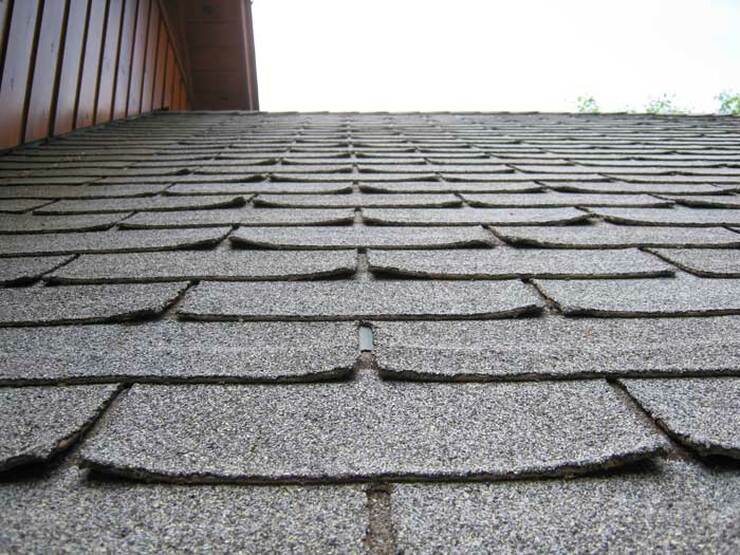As homeowners, we all know that at some point, we have to invest in a new roof. But, the big question is: When exactly is the perfect time to take on serious roofing repairs? Replacing the roof too soon or too late could seriously cost you. You want to fully maximize your roof’s shelf life, but you don’t want to cause more damage to your home by keeping a withered roof on the house. So, what do you do? We’ve seen many homeowners face this dilemma.
WE’VE PUT TOGETHER A LIST OF FIVE WARNING SIGNS THAT MEAN IT’S TIME FOR SOME MUCH-NEEDED ROOF REPAIRS:
#1 CURLING AND BUCKLING:
Areas of your roof that have begun to curl and buckle probably exceeded their life expectancy. Often times, the parts of a roof that experience the most curling and buckling are the portions that are frequently exposed to the elements: sunlight, water, snow or sleet. Like the skin on the human body that reflects internal physiological defects, shingles often shed light on underlying, deep-rooted roofing issues.
#2 LEAKS IN THE ATTIC:
Your roof is essentially the first line of defense for your home. If water is making it passed this line of defense, it’s time for a new roof. Check your attic every once in a while to ensure that water hasn’t settled into the insulation or dry wall. Be careful, if this issue is not taken care of promptly, a simple attic leak can develop into a black mold problem. Added moisture encourages the growth of all types of bacteria, fungi and mold.
#3 GRANULE LOSS:
In roofing, granules reflect lifespan: The more granules a roof has, the newer it is – and vice versa. Granules protect the shingles from being broken down by the sun. Make sure to check your gutters to see if there is a larger-than-usual amount of granules in them. If this is the case, it means that your roofing is becoming particularly worn at a quicker-than-usual rate.
#4 MISSING SHINGLES:
High winds can easily blow off a shingle from your roof. And, missing shingles result in overexposure to the elements for your roof. Roofing repairs don’t always entail replacing the entire roof. But, keep in mind, if a shingle falls off without assistance from particularly harsh weather conditions, then it probably means that your roof is too old. Shingles lose their grip as a roof ages.
#5 DARK SPOTS ON THE SHINGLES:
Just like an overabundance of granules in the gutters, dark spots on a roof also indicate granule loss. When the granules are missing, portions of the shingle will appear darker than areas that are still coated with granules. A new roof will not have this discolored appearance. The older and more-worn a roof, the more spots you’ll notice. This is particularly important because – as aforementioned – granules protect the shingles from the effects of sun exposure. Think of granules as sunscreen for your roof.

